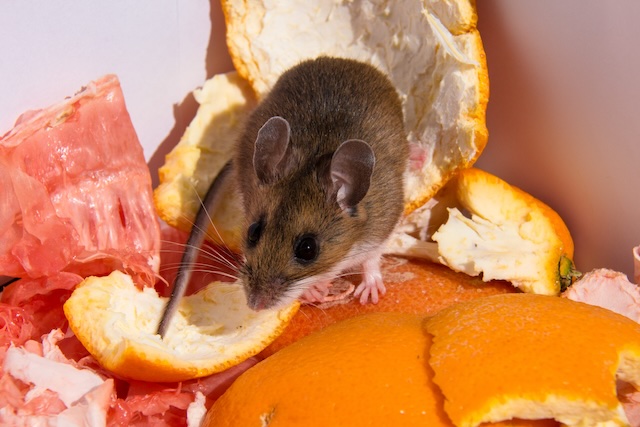Getting rid of mice requires a methodical and thorough approach that includes finding them and kicking them out. To get rid of mice, you need to do more than just get rid of the obvious signs. You also need to learn how they behave, seal off their entry points, and come up with ways to stop them from coming back.
1. Finding something:Finding mice is the first step in getting rid of them for good. It is very important to know the signs of a mouse problem. In dark areas, look for droppings, gnaw marks on food packaging, and signs of nests. A pet’s strange behaviour, like becoming more interested in certain areas, can also be a sign.
2. Evaluation of the severity of the infestation:Once signs of an outbreak are found, it’s important to figure out how bad it is. Are you working with a few mice or a lot of them? This evaluation tells us how strong the control methods need to be.
3. Finding the Points of Entry: 2.There are very small holes that mice can get through. A key step is to find these entry places and seal them off. Gaps around pipes, vents, and cracks in the base are all common places for pests to get in. Even small holes that don’t seem important can become entrances for mice.
4. Treatment Plan Made Just for You:When it comes to getting rid of pests, one size doesn’t fit all. A personalized treatment plan is made for your home or business that takes into account its unique features. This could include a mix of traps, rodenticides, and ways to keep rodents out.
5. Putting traps:Mechanical traps are a big part of getting rid of mice. Putting traps in places with a lot of activity is a smart way to make sure they work. Based on the situation, different kinds of traps can be used, like glue traps or snap traps.
6. Rodenticides: To keep mouse numbers in check, professional-grade rodenticides are used. These are put in cases that can’t be opened easily so that residents and pets are safe and the pests are killed effectively.
7. Techniques for Exclusion:As important as getting rid of the current outbreak is stopping others from happening. As part of exclusion methods, possible entry points are sealed off. This could mean fixing cracks, putting up screens, and making weak spots stronger.
8. Getting rid of the humane:Ethical concerns are an important part of complete mouse pest control. A top goal is making sure that mice are removed humanely, whether they are alive or dead. This includes using nets made to catch animals alive and safe ways to get rid of them.
9. Recommendations for sanitation:Getting rid of the things that mice like is important for long-term control. Professionals in pest control often give advice on how to keep your home clean, store food properly, and get rid of trash properly.
10. Inspections after the fact:After the first treatment, the process doesn’t end. Follow-up checks are done to make sure that the steps taken are working. This step is very important for finding any new entry points and fixing them right away.
11. Talking to each other:It is very important for homeowners and pest control experts to be able to talk to each other clearly. People who have hired us are told what is being done, what results are expected, and what they can do to stop future outbreaks.
12. Learning About How Mice Act: **To effectively handle a mouse, you must first understand how it acts. Professionals in pest control often teach people about mice’s habits. This helps people spot things that might make them more likely to get mice in the future.
13. What is Integrated Pest Management (IPM)?Integrated Pest Management takes a look at things from all angles. This means using a mix of biological, cultural, physical, and chemical methods to get rid of pests in a way that lasts and works.
14. The use of professional gear: **Professionals who get rid of pests have access to special tools that make their work more efficient. This includes high-tech screening tools, safety gear, and devices for applying treatments directly to the target area.
15. Practices that are good for the environment:A lot of pest control companies put an emphasis on doing things that are good for the environment. This means using products that don’t hurt the environment too much and pushing for long-term answers.
16. Monitoring on a regular basis:Continuous tracking strengthens the steps taken to prevent problems. By doing regular checks, you can find any signs of mouse activity early on, so you can take action quickly before an infestation takes hold.
Complete control of mouse pests is an ongoing process that needs a mix of skill, planning, and dedication. Professionals make sure that homes and businesses are not only free of current mouse infestations but also safe from future ones by getting to the root of the problem, sealing off entry points, and using only humane and effective control methods.
